Description
The Osler Institute utilized state-of-the-art equipment to record our Live September 2023 comprehensive Ophthalmology Virtual Review Course and bring it to you! These Video files are stored “in the cloud,” so you can stream them anywhere, anytime, as long as you have an internet connection, watch or listen to them on your phone or computer – your learning experience is almost like being at the live activity but without travel costs and time away from your practice. In addition, each online review is an electronic downloadable copy of the syllabus corresponding to the lectures for your viewing or as a free-standing study or clinical practice guide.
The Ophthalmology Subscription-based Review is designed to help you pass your written exams and update your clinical knowledge base; it benefits Ophthalmology residents taking their WQE and practicing physicians preparing to complete the Quarterly Question Module. The course includes didactic lectures with embedded review questions. Emphasis is on evidence-based practice and board-relevant standards of care, incorporating new concepts and testing strategies, including an extensive review of optics and refraction, ophthalmic imaging, and more recent approaches to ophthalmic surgery. As a result, it provides a good review for physicians wanting a thorough update.
CME
Release Date: September 25, 2023
Expiration Date: September 24, 2026
Estimated Time to Complete: 56 hours
Accreditation:
The Osler Institute is accredited by the Accreditation Council for Continuing Medical Education (ACCME) to provide continuing medical education for physicians.
Designation:
The Osler Institute designates this Enduring Material for a maximum of 56 AMA PRA Category 1 Credits™. Physicians should only claim credit commensurate with their participation in the activity.
Required Physician Participation:
Review the audio/video lectures at your own pace. To claim CME credit, Learners must complete a self-assessment post-test (a score of 75% or greater is required) and activity evaluation to test the knowledge gained and its application to your practice. You may take the test and utilize the accompanying syllabus by accessing the links provided. More than one test attempt is allowed, and feedback is provided.
Financial Disclosure
Faculty, Planner, and Reviewer Disclosure Declaration
In compliance with the Standards, Guidelines, and Ethical opinions of the ACCME, AAMC, and AMA, The Osler Institute requires that anyone with input into the planning or presentation of Continuing Medical Education activities provided or jointly provided by The Osler Institute must disclose to the program audience any relevant financial relationships with companies or organizations about whose products or services they are discussing in their presentations.
The following faculty/planners/reviewers disclosed a relevant financial relationship(s).
The following faculty/planners/reviewers listed no relevant financial relationship(s) to disclose.
Lucas Groves, MD – Howard Pomeranz, MD, PhD – Andrew Hou, MD – Jeffery Tran, MD – Peter Tang, MD – Lucas Bonafede, MD – Andrew Davis, MD – Anam Qureshi, MD – Shawn Gappy, MD – Michael Jensen BS Pharm, MS Pharm – Deep Parikh, MD – David Yoo, MD – Anjum Koreishi, MD – Paras Khandhar, MD – Gonzalo Vike Vicente, MD – Jonathan Lin, MD – David Fleischman MD, MS, FACS
Erin Baynard† – Joseph Selliken, MD† – Michael Stewart†
Copies of the Faculty Disclosure Forms are available upon request.
† Program Planning Committee
* Reviewer, if Applicable
Faculty and Topics
 Lucas Groves, MD
Lucas Groves, MD
Critical Reasoning and Communication Skills (Written Exam)
Critical Reasoning and Communication Skills (Oral Exam)
Fluorescein Angiography
Laser Photocoagulation and Alternatives
Intraocular Tumors
Orbital Imaging
 Howard Pomeranz, MD, PhD
Howard Pomeranz, MD, PhD
Optic Neuropathies
Temporal Arteritis
Pupillomotor Pathways
Visual Fields
Myasthenia and Thyroid
Phakomatosis
Cranial Neuropathies
Supranuclear Pathways and Nystagmus
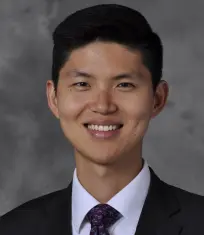 Andrew Hou, MD
Andrew Hou, MD
Optics and Refraction I
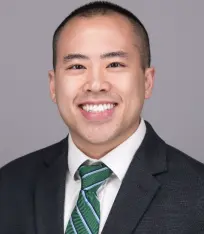 Jeffrey Tran, MD
Jeffrey Tran, MD
Ocular Surface
Lens and Cataracts
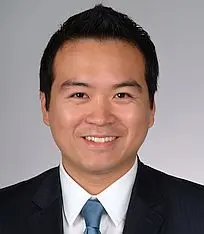 Peter H. Tang, M.D., Ph.D.
Peter H. Tang, M.D., Ph.D.
Inherited Chorioretinal Diseases
Retinal Vessel Occlusion
Macular Degeneration
Peripheral Retinal Diseases
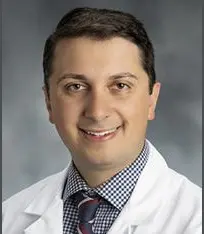 Shawn Gappy, MD
Shawn Gappy, MD
Pediatrics Strabismus I – III
 Lucas Bonafede, MD
Lucas Bonafede, MD
Pediatrics Non-Strabismus I – III
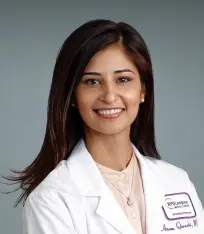 Anam Qureshi, MD
Anam Qureshi, MD
Conjunctival Disorders
Corneal Ulcers
Cornea Surgery
 Andrew Davis, MD
Andrew Davis, MD
Optics and Refraction II
 Michael Jensen, RPh
Michael Jensen, RPh
Ocular Pharmacology I – IV
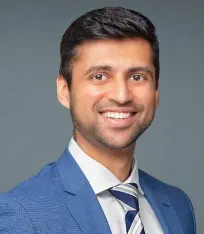 Deep Parikh, MD
Deep Parikh, MD
Diabetic Retinopathy
Retinal Vascular Disease
Toxic Retinopathies
 David Yoo, MD
David Yoo, MD
Eyelid Anatomy and Surgery
Orbital Trauma
Orbital Inflammation
Orbital Tumors
Lacrimal Disease
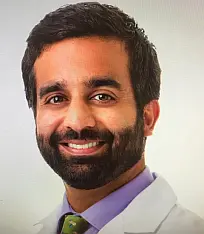 Anjum Koreishi, MD
Anjum Koreishi, MD
Uveitis
 Paras Khandhar, MD, FAAP
Paras Khandhar, MD, FAAP
Evidence-Based Medicine
Patient Safety and Quality Improvement
 Gonzalo Vike Vicente, MD
Gonzalo Vike Vicente, MD
Optics Problem Solving
 Jonathan Lin, MD, PhD
Jonathan Lin, MD, PhD
Pathology I – III
 David Fleischman, MD, MS, FACS
David Fleischman, MD, MS, FACS
Glaucoma I -III
How-To and Player Help
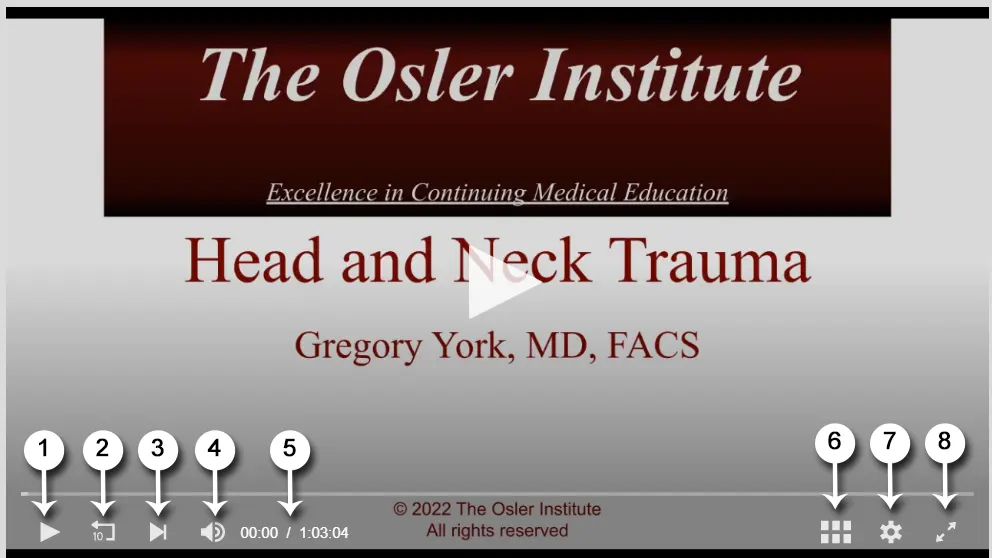
The player controls left to right.
-
- Play
- Rewind 10 sec
- Next up
- Volume
- Time Played/ Total Time
- More Videos
- Settings
Quality
Playback Rates
- Full Screen
7. Settings, Quality, and Playback Rates
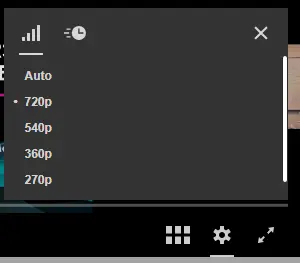
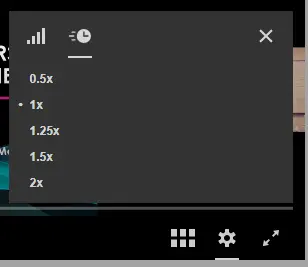
All Subscription-Based Reviews are accessed from the page that they were purchased from.
Guarantee
The Osler Institute takes pride in providing the highest quality education to our learners. We offer courses that are guaranteed to help them confidently pass their examinations. In the unlikely event of a learner not passing their examination, we offer the opportunity to re-enroll in the same course tuition-free until they succeed. For complete information on this guarantee, we invite you to review our comprehensive Terms and Conditions.

 Lucas Groves, MD
Lucas Groves, MD Howard Pomeranz, MD, PhD
Howard Pomeranz, MD, PhD Andrew Hou, MD
Andrew Hou, MD Jeffrey Tran, MD
Jeffrey Tran, MD Peter H. Tang, M.D., Ph.D.
Peter H. Tang, M.D., Ph.D. Shawn Gappy, MD
Shawn Gappy, MD Lucas Bonafede, MD
Lucas Bonafede, MD Anam Qureshi, MD
Anam Qureshi, MD Andrew Davis, MD
Andrew Davis, MD Michael Jensen, RPh
Michael Jensen, RPh Deep Parikh, MD
Deep Parikh, MD David Yoo, MD
David Yoo, MD Anjum Koreishi, MD
Anjum Koreishi, MD Paras Khandhar, MD, FAAP
Paras Khandhar, MD, FAAP Gonzalo Vike Vicente, MD
Gonzalo Vike Vicente, MD Jonathan Lin, MD, PhD
Jonathan Lin, MD, PhD David Fleischman, MD, MS, FACS
David Fleischman, MD, MS, FACS

